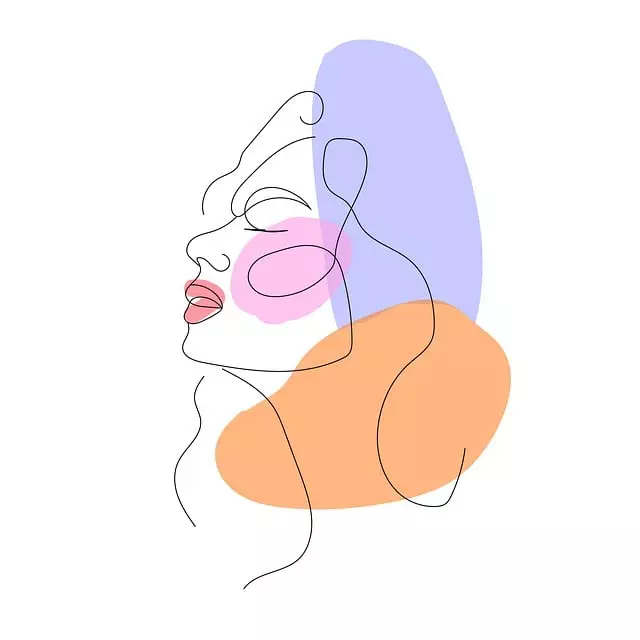Botox is a popular non-surgical treatment for smoothing forehead lines and frown lines, temporarily paralyzing muscles that cause dynamic wrinkles. With immediate results, minimal downtime, and safe administration by experts, it offers a preferred solution for anti-aging without invasive procedures. While risks like muscle weakness and bruising exist, the procedure has proven effective in reducing wrinkles for 3-6 months before requiring repeat applications. Adhering to aftercare instructions is crucial for optimal results, and future trends promise diverse alternatives alongside Botox for a more comprehensive approach to skincare.
Botox has emerged as a popular and effective solution for continuous anti-aging, specifically targeting forehead lines and frown lines. This article delves into the science behind Botox and its role in non-surgical face lifts. We explore the causes and concerns related to these common wrinkles, how Botox works to reduce dynamic wrinkles, and the numerous benefits of its use. Additionally, we provide safety considerations, outline the treatment process, share recovery tips, discuss long-term effects, and introduce alternative anti-aging options, making this a comprehensive guide for understanding Botox for forehead lines and frown lines.
Understanding Forehead Lines and Frown Lines: Causes and Concerns

Forehead lines, often referred to as frown lines, are a common concern for many individuals seeking anti-aging solutions. These vertical wrinkles between the eyebrows can be a result of various factors, including aging, muscle movement, and skin elasticity loss. As we age, our skin produces less collagen and elastin, which are essential proteins that keep the skin firm and supple. This natural decline can lead to the formation of prominent lines on the forehead, adding years to one’s appearance.
Additionally, frown lines may be exacerbated by habitual facial expressions, such as frequent frowning or squinting, especially in individuals with naturally thin or delicate skin. Understanding these causes is crucial when considering Botox for forehead lines and frown lines. Botox, a popular non-surgical cosmetic treatment, can effectively smoothen these wrinkles by temporarily paralyzing the muscles that cause them, offering a more relaxed and youthful appearance.
The Role of Botox in Non-Surgical Face Lift Procedures

Botox has emerged as a leading non-surgical option for face lift procedures, particularly targeting forehead lines and frown lines. This neurotoxin works by temporarily paralyzing muscles, thereby reducing dynamic wrinkles caused by facial expressions like furrowing or squinting. By addressing these common signs of aging, Botox offers a more youthful appearance without the need for invasive surgery.
The procedure is relatively quick, usually taking only 15 to 30 minutes, and results are visible within days to a week after treatment. Many patients appreciate the convenience and minimal downtime associated with Botox injections compared to surgical alternatives. Moreover, when administered by experienced professionals, Botox can provide natural-looking results, enhancing one’s features without appearing overly done.
How Botox Works to Reduce Dynamic Wrinkles

Botox, a highly effective neurotoxin, has revolutionized the anti-aging industry, particularly for targeting dynamic wrinkles on the face. When injected into specific muscle groups, Botox blocks nerve signals that trigger muscle contraction, which is a significant contributor to the formation of fine lines and wrinkles over time. This action is especially beneficial for treating forehead lines and frown lines, which are often among the first signs of aging.
The science behind its effectiveness lies in its ability to temporarily paralyze the muscles responsible for creating these wrinkles when we frown or squint. By preventing these muscle contractions, Botox prevents the deep grooves and creases from forming, thereby reducing the appearance of dynamic wrinkles. This non-invasive procedure offers a significant advantage over surgical methods as it provides a subtle yet effective result, allowing patients to maintain a natural expression while achieving a more youthful complexion.
Benefits of Using Botox for Continuous Anti-Aging

Botox has emerged as a popular and effective solution for those seeking continuous anti-aging treatment, particularly targeting forehead lines and frown lines. Its benefits extend far beyond temporary wrinkle reduction; it offers a long-lasting, non-invasive approach to achieving a youthful appearance. By relaxing the muscles responsible for facial wrinkles, Botox can prevent their formation and reduce existing lines, providing a smoother, more refined complexion.
This procedure is highly versatile, addressing various areas of concern including brow furrows, crow’s feet, and vertical frown lines between the eyebrows. The treatment is safe and well-tolerated by most individuals, with minimal downtime required. Patients often experience immediate results, enjoying a refreshed and rejuvenated look that can last for several months, making it an excellent choice for those committed to long-term skincare.
Safety and Effectiveness Considerations Before Getting Botox

Before considering Botox for forehead lines and frown lines, it’s crucial to weigh safety and effectiveness factors. The procedure, when performed by a licensed and experienced professional, is generally safe. However, like any medical treatment, it carries potential risks, such as temporary muscle weakness, bruising, or an uneven treatment area. It’s essential to understand these possibilities and discuss them openly with your provider.
Effectiveness varies based on individual factors, including skin type, age, and overall health. Botox is particularly effective in reducing the appearance of dynamic wrinkles caused by facial expressions, like frown lines and forehead creases. Research shows significant improvements after treatment, but results can differ. Discussing expectations and reviewing before-and-after images with your provider can help set realistic goals for your Botox for forehead lines and frown lines journey.
The Process: What to Expect During a Botox Treatment Session

Botox treatments for forehead lines and frown lines have become a popular anti-aging solution, offering a non-invasive approach to smoothing out wrinkles. During a typical Botox session, patients can expect a relatively quick and pain-free experience. The procedure usually involves several small injections of botulinum toxin into specific muscle groups responsible for facial expressions. These muscles are the ones that contract to form frown lines and forehead creases over time.
As the Botox takes effect, it blocks nerve impulses, temporarily paralyzing the treated muscles. This results in a reduction of dynamic wrinkle formation, providing a more relaxed and youthful appearance. The procedure is generally well-tolerated, with only mild temporary side effects such as redness or swelling at the injection sites. Patients can return to their regular activities immediately after the treatment, making it an attractive option for those seeking a subtle yet effective anti-aging measure without extensive downtime.
Recovery and Aftercare Tips for Optimal Results

After your Botox treatment for forehead lines and frown lines, it’s crucial to follow specific aftercare tips to ensure optimal results. For the first 24-48 hours, avoid any strenuous activities or exercises that could increase blood flow to the treated areas. This period is when you’ll experience the most sensitivity, so resting and avoiding intense physical exertion is essential. Applying a cold compress for 10-15 minutes several times a day can help reduce swelling and discomfort.
In the weeks following your treatment, it’s important to maintain good hygiene and avoid touching or rubbing the treated areas. Steer clear of any skin care products that may irritate the skin for at least a week after the procedure. You might notice some slight redness or minor swelling, which is normal. However, if you experience severe pain, prolonged inflammation, or any unusual symptoms, contact your healthcare provider immediately. Following these simple recovery tips will help you achieve the best anti-aging outcomes from your Botox treatment.
Long-Term Effects and Maintenance of Botox Treatments

Botox treatments for forehead lines and frown lines have become a popular anti-aging solution, offering significant results in reducing the appearance of wrinkles. However, it’s essential to understand that while Botox provides long-lasting effects, they are not permanent. The average duration of botulinum toxin (Botox) effects is between 3 to 6 months, after which the treatments need to be repeated for continued wrinkle prevention. This maintenance schedule ensures that the muscles responsible for creating those telltale lines don’t regain their previous strength and tone.
The decision to maintain Botox treatments should be based on individual results and preferences. Some people may choose to continue treatments indefinitely to preserve their youthful appearance, while others might opt for a more sporadic approach as the effects wane. Regular consultations with a dermatologist or qualified healthcare provider can help determine the optimal maintenance plan, ensuring that Botox remains an effective and safe anti-aging strategy for forehead lines and frowns.
Alternative Options and Future Trends in Anti-Aging Treatments

In the realm of anti-aging treatments, Botox has long been a popular choice for tackling forehead lines and frown lines. However, as aesthetic preferences evolve and technological advancements emerge, it’s essential to explore alternative options. Fillers, for instance, offer a complementary approach by plumping up and defining facial contours without the same muscle-relaxing effects of Botox. These treatments can provide significant results in terms of reducing the appearance of aging signs while allowing for more natural expression.
Looking ahead, future trends in anti-aging treatments promise to be even more diverse and tailored. Innovations like gene therapy and stem cell therapies hold potential for addressing deeper-rooted causes of skin aging. Additionally, advancements in laser technology continue to refine skin texture and stimulate collagen production. As these developments mature, individuals will have increasingly sophisticated options to maintain a youthful appearance, complementing the established methods like Botox for forehead lines and frown lines.
